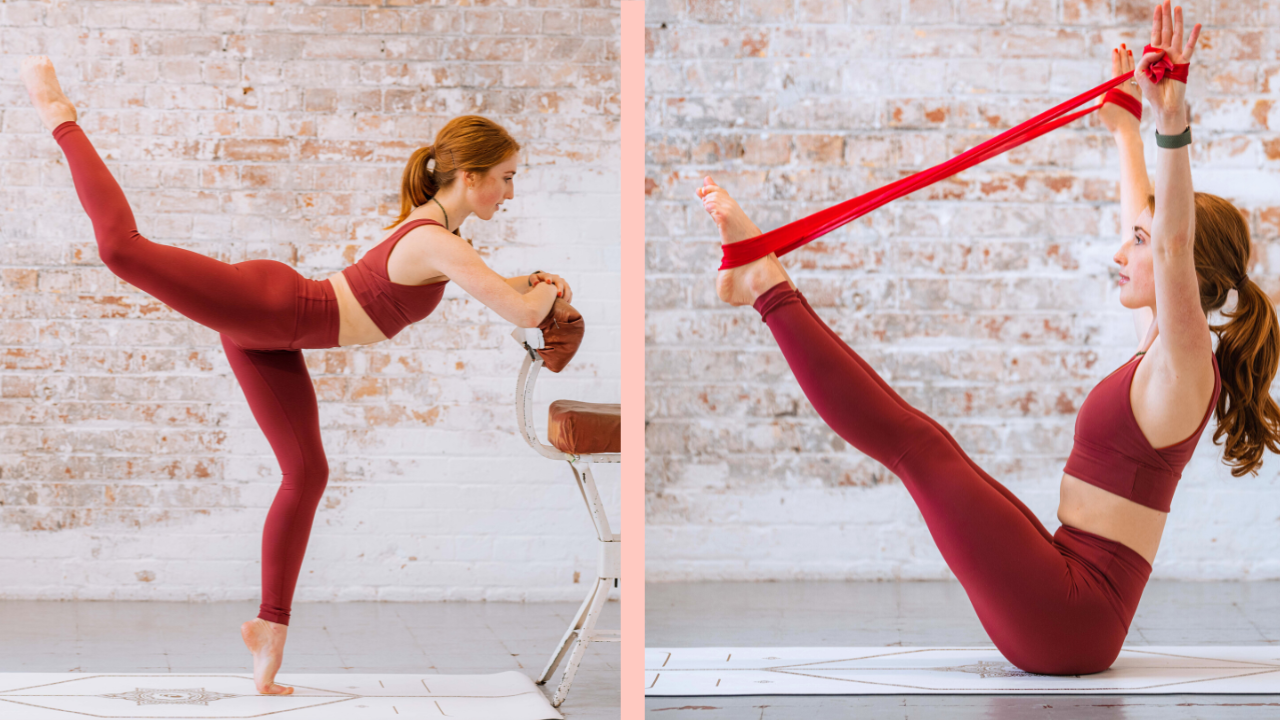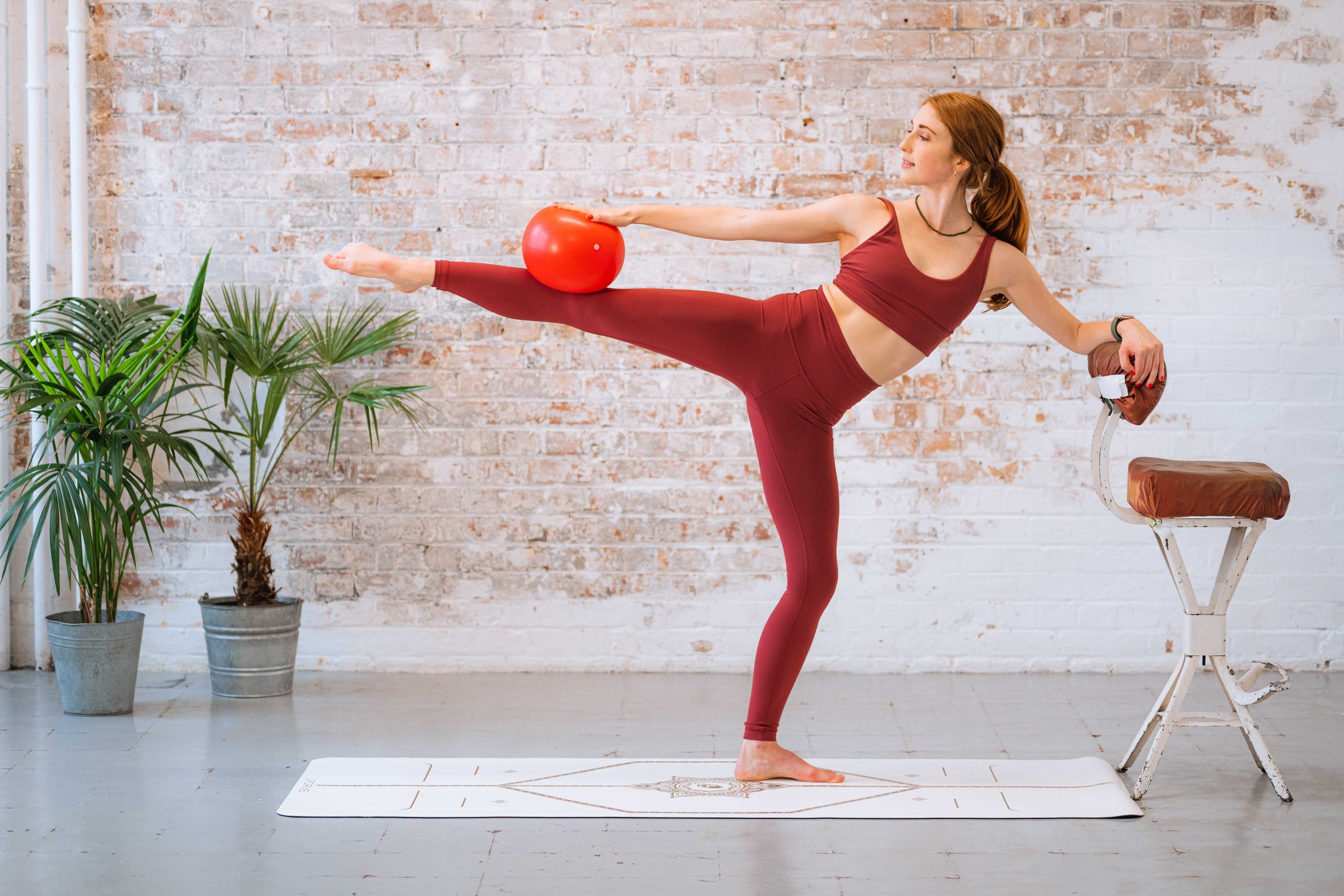Barre vs. Pilates
The popularity of Barre and Pilates has soared in recent years as more people are looking for workout routines that they can do at home without needing a gym membership. Barre and Pilates are great for at-home workouts because they don't require any special equipment - all you need is a mat or a chair.
You're not alone if you're wondering about the difference between Barre vs. Pilates. Both are low-impact workouts that yield improved muscle and core strength, but if you're new to Barre, it can be difficult to distinguish between them.
That's why I've put together the following guide, where I'll talk you through the main differences between Barre vs. Pilates, so you'll be able to differentiate your Pliés from your planks.
What is Barre?
Barre is a type of workout style that combines elements of ballet, yoga, and Pilates together. Barre exercises focus on Isometric movements, which means you contract and target specific muscles. Barre is a low-impact cardio workout aimed at achieving improved balance, strong elongated muscles, improved core strength, and strong glutes and hips.
Barre is deceptively challenging and super fun! Barre has grown in popularity thanks to the fun choreographed routines, upbeat, faster-paced music, and the physical results you can achieve through regular Barre classes.
What equipment do I need for Barre?
Barre is done using a mat and a ballet barre for support. If you don't have a ballet barre, don't fear, as Barre can still be done at home using a chair, table, or kitchen counter for support. Apart from the support, Barre is usually done using body weight, so you don't need any weights to get started.
Once you progress and want to increase the intensity of your Barre workouts, you can use small hand weights, resistance loop bands, balls, and ankle weights such as Bala bangles.
What is Pilates?
Pilates is a type of exercise that emphasizes controlled, purposeful movements with a strong focus on the breath. There are many different types of Pilates, but overall it focuses on improving flexibility, balance, and core strength.
Pilates is accessible EVERYbody, especially those recovering from an injury who want to focus on core strength and mobility.
What equipment do I need for Pilates?
For Pilates, all you'll need is a mat (or a towel). However, you may find in some classes the use of small equipment such as loop bands, resistance bands, and Pilates balls for added intensity to your workout. If you're looking for Pilates equipment, check out my favorites here.
Barre vs. Pilates key differences
So now we've established the basics of Barre vs. Pilates, now, what are the key differences?
Barre is mostly done standing, with a focus on legs, glutes, and cardio. While Pilates is predominantly mat-based and core-focused.
Barre focuses on high repetitions and is usually choreographed to fast-paced music, while Pilates is a slower, more controlled workout, focusing on breath work, alignment, and control of movement over repetitions.
Benefits of Barre and Pilates
Both Barre and Pilates improve flexibility and balance and strengthen your muscles. While the exercises in each workout differ, both forms of movement are low-impact and great for building muscle strength. Let's take a look at the main Barre and Pilates benefits below.
Improved glute and hip strength
While both Pilates and Barre build glute strength and improve hip mobility, Barre focuses more on glute-building exercises.
Barre focuses heavily on building glute strength through a series of Plié movements (a squat-like exercise performed with your back straight and feet turned slightly out) and single-leg bodyweight exercises.
2. Improved core strength & stability
While Barre is great for improving your core, Pilates is more focused on building your powerhouse muscles, so if you're looking for a more core-focused workout, Pilates should be your go-to.
3. Low-impact
Barre and Pilates are low-impact exercises, meaning they don't impact your joints like high-impact sports such as running or tennis.
Pilates is especially great for anyone including those recovering from injury, people wanting to exercise through pregnancy or postpartum, and the elderly.
4. Boosts mood and reduces stress
It's well known that exercising stimulates feel-good endorphins, which help boost our mood. In addition, taking regular Pilates or Barre classes can reduce the levels of your body's stress hormones, such as adrenaline and cortisol, to leave you feeling calm and relaxed.
Where to try Pilates and Barre classes?
Pilates classes
You can try Pilates classes at home, online, or in a studio. If you'd like to train with me, I offer both online and studio classes.
Online Pilates classes - If you want to try a free online Pilates class, you can access the full Kala Pilates online library and live classes for free in my free 7-day trial. I also offer private online pilates classes, so you can train with me anywhere in the world. Click here to find out more.
Pilates studio classes - If you're based in Sydney and looking for a studio-based Pilates class, I teach weekly classes at Mode Pilates, Luxe Yoga & Gfitness Freshwater.
Barre classes
The Kala Pilates online library is full of super fun and challenging on-demand Barre classes that you can do anywhere and anytime. If you want to try an online Barre class for free, you can sign up for a 7-day free trial here.
If you're looking for Barre classes in Sydney, why not join me at Mode Pilates.




